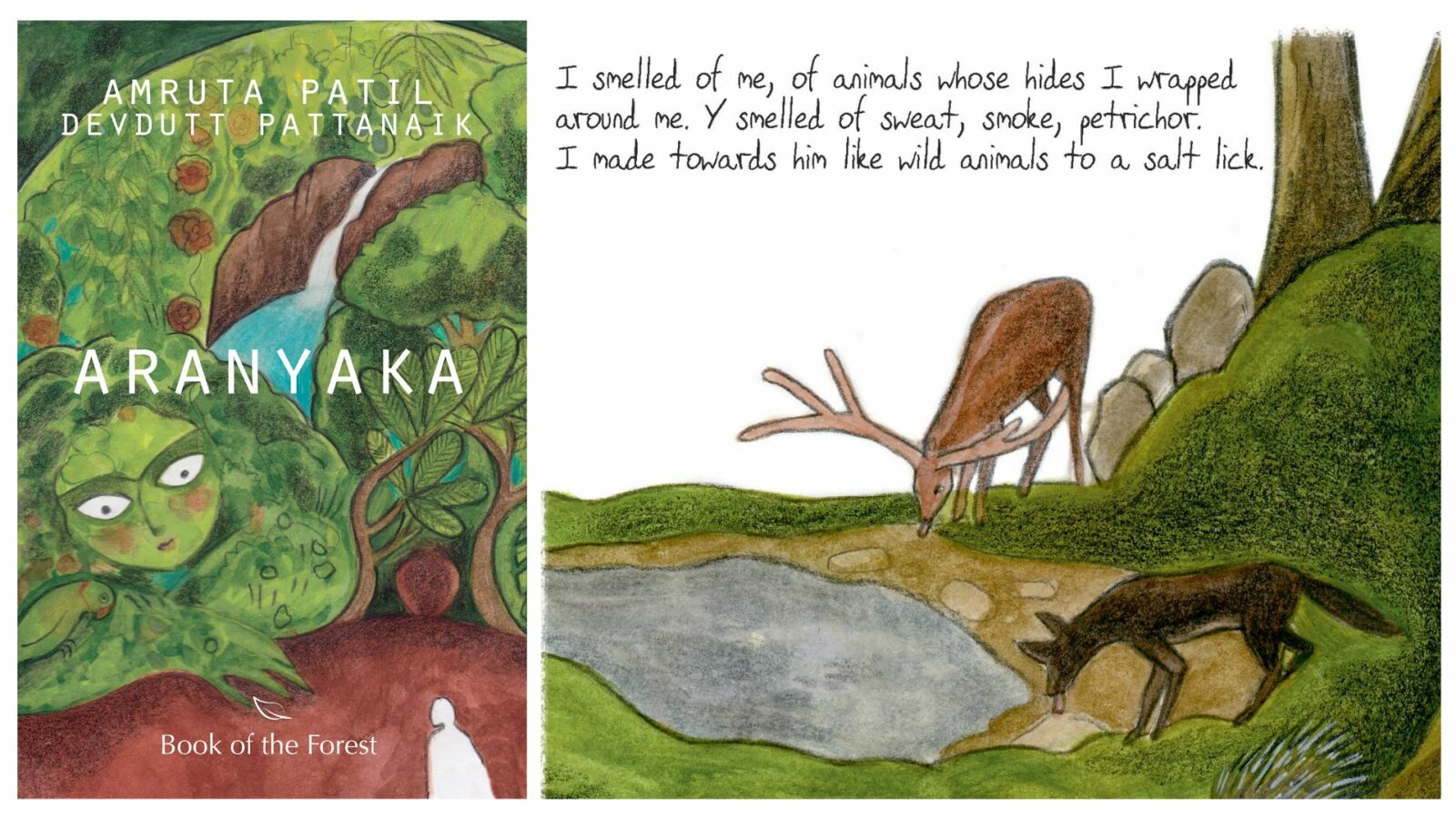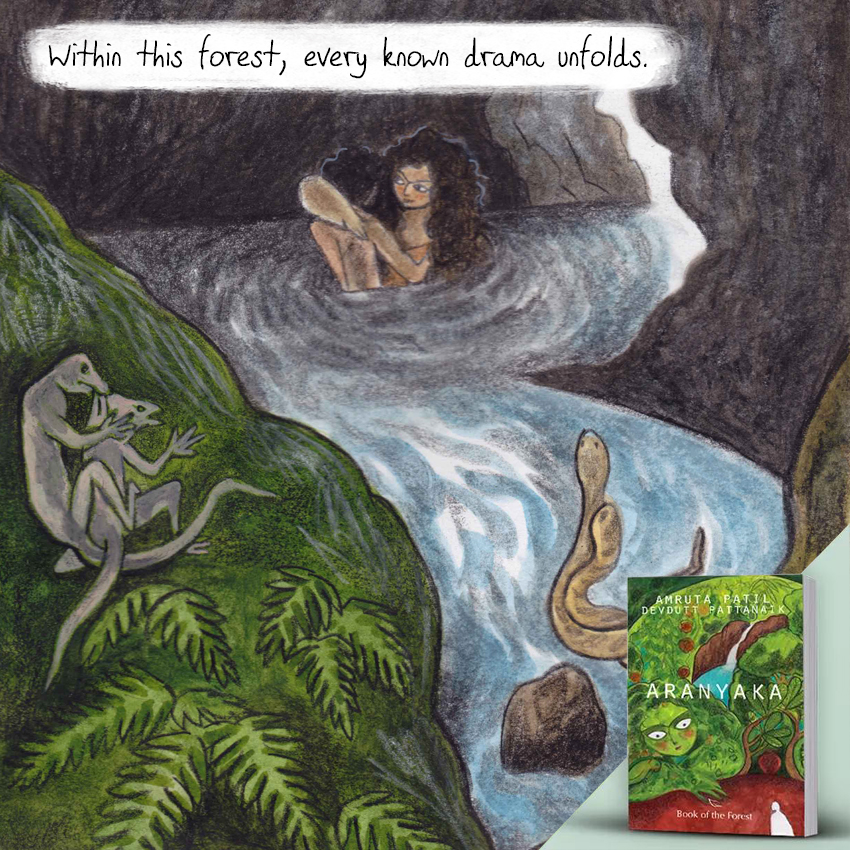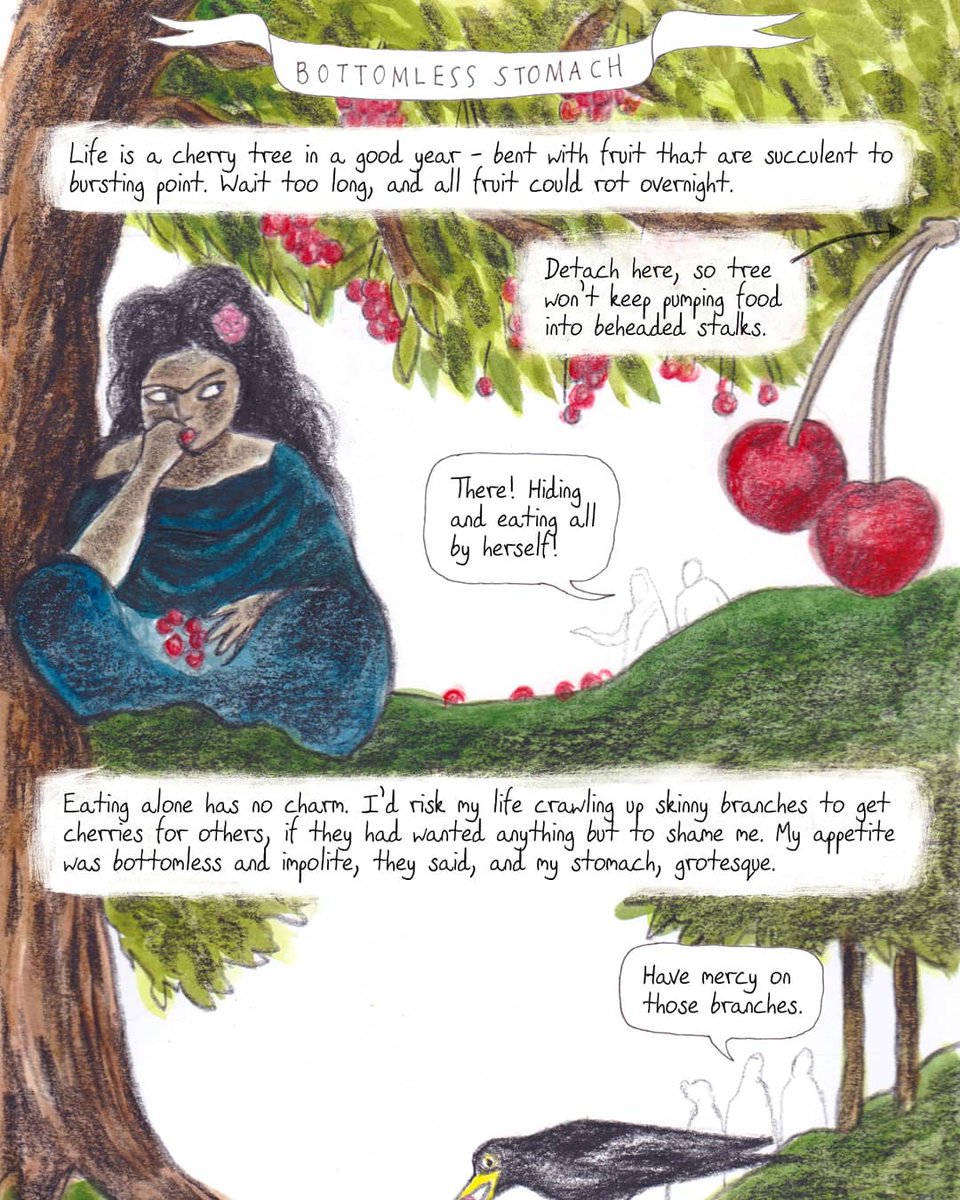‘Aranyaka’-The Book of Forest: Amruta Patil’s charming illustrated book with minimal text is magically inspiring


India’s first female graphic novelist Amruta Patil compiles an endeadrig account on the inputs from mythologist Devdutt Pattanaik which also proposes to nourish in equal measure, with her modern compendium of illustrated book Aranyaka: Book of the Forest.
The redeeming quality of the illustrated book seems to be Amruta Patil’s stunning watercolours. With every leaf that you turn, your heart will jump with glee as Amruta and Devdutt’s commentary on the process of creating a book is simply astonishing. The illustrations compel a reader to flip the through book back in to skim through it again.

The alluring illustrated book Aranyaka is about the great forests within us, and without. It is about food, feeding and love. Braiding the stories of three spirited rishikas—Katyayani the Large, Maitreyi the Fig and Gargi the Weaver—it explores the fears and hungers that underpin all human interactions.
Aranyaka is also the story of the sage Yajnavalkya (called Y in the book), told through the perspective of his wife Katyayani. History dismisses her as an insignificant housewife, but she is Aranyaka. She possesses a wisdom that cuts through the obvious and goes beyond. With her deep understanding of how Aranya functions, she is able to better understand human behaviour.
When the sage grows restless, it is her observations that are able to calm him. Yet, while in her words, “I thought we were equals, bilateral symmetry of leaves. He, fire of enlightenment. And me, fire of the microcosm. Y thought we were halves, not equals. He, above. Me, below.”

Published in 2019, with creative input from mythologist Devdutt Pattanaik, this creative volume of watercolour illustrations and Vedic commentary affirms how wisdom may lie in unexpected quarters: like the kitchen or within the belief system of someone who wouldn’t exactly be described as intellectual.
“It uses a small episode in the Brihadaranyaka Upanishad as a stepping stone,” as per Patil. “There is a one-line mention of Yajnavalkya’s wife, where it says something to the effect that she had the intelligence common to women.”
The book is rich with allegories and metaphors for our daily life and decisions as well as (wo)man’s relationship with nature. The illustrations are so delightful and carry the thoughts seamlessly with minimal text that leaves an indelible mark on your psyche.
Designed by Parisian architecture agency RDAI on Indian aesthetics, French luxury retail store, Hermès has opened its second store in the heart […]
The tourism department of Rajasthan is hosting the thirteenth Great Indian Travel Bazaar (GITB) in Jaipur from May 5-7 on an intriguing […]
Designed by studio 6158 amidst sun drenched classic Bungalows of Chapel Road, Bandra, the two-storey facade of Mokai stands whimsically spreading its […]
Don’t miss out on this incredible opportunity to be a part of our thriving art community!